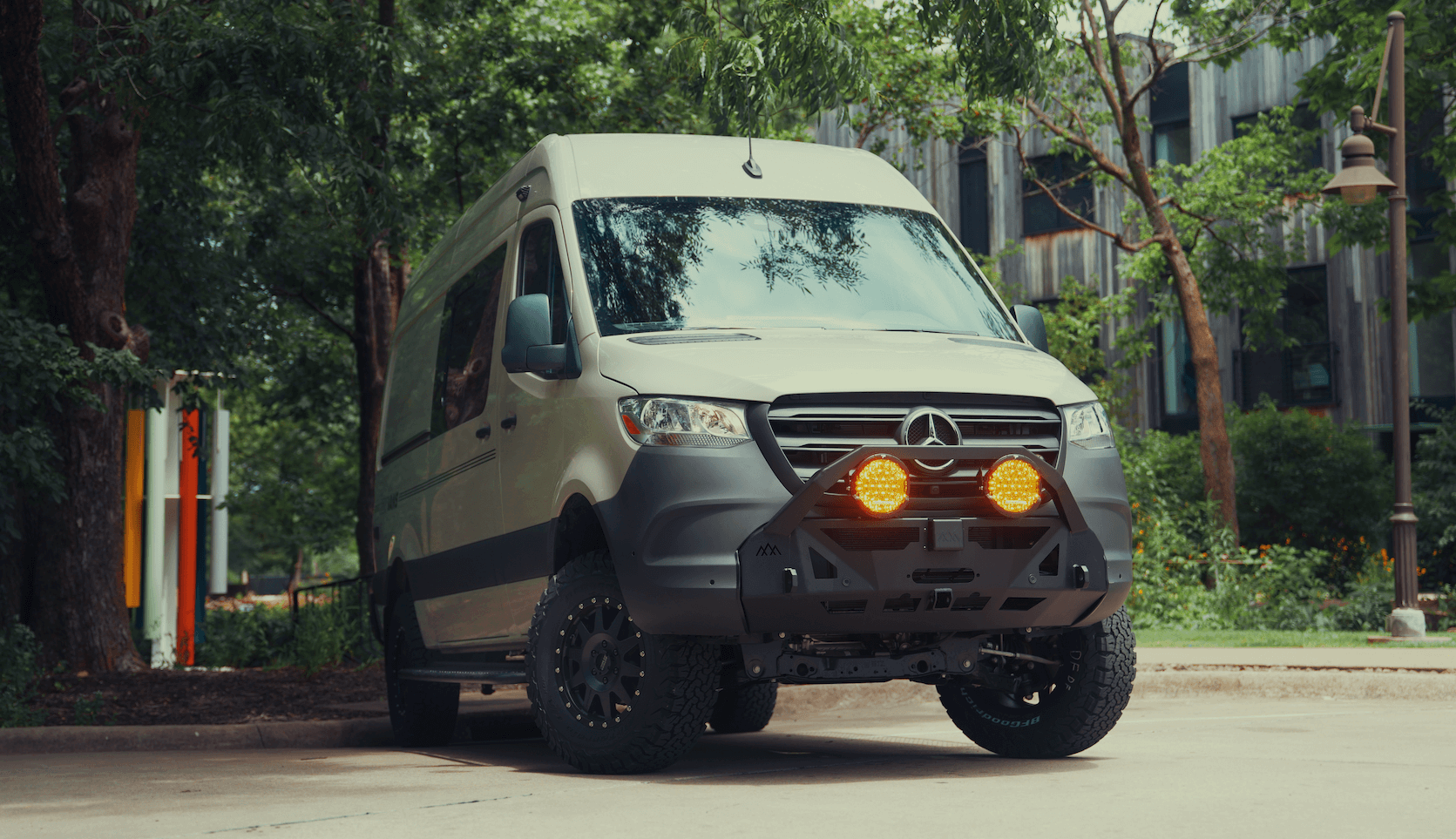Recreational Vans

A high roof van is a tall roof variant of a cargo or passenger van that allows most adults to stand upright inside without stooping. The extra roof height opens vertical storage options, makes interior movement easier, and supports overhead systems like cabinets, HVAC, or solar wiring. Typical interior heights range roughly from the mid 70 inches to low 80 inches depending on brand and model. Wheelbase and body length are independent choices, so you can pair high roof with short, long, or extended bodies to match parking and cargo needs.
High roof vans appear in cargo, crew, and passenger layouts. They are popular for camper van conversions, mobile workshops, and service businesses because every inch gained vertically can be reallocated to storage below, living space in the center, or systems overhead. Taller sidewalls also accept larger windows, vents, and roof accessories.
Most modern platforms offer multiple roof heights and wheelbases. While exact specs vary by model year and options, these patterns are consistent:
Measure from floor to roof rib to verify standing height after flooring and ceiling treatments. Insulation, sound deadening, subfloor, and ceiling panels can remove 2 to 4 inches of headroom. Plan for finished height early so beds, galley tops, and overhead storage do not crowd movement.
Hinged rear doors and sliding door openings also matter. A high roof sliding door typically accommodates taller occupants and bulkier cargo, but check for awning or step clearance when open. Roof curvature changes between standard and high roof variants, which affects mounting feet and crossbars, so choose roof racks and solar hardware designed for your exact body and roof profile.
Standing height transforms daily use. Cooking, changing, and gear loading become simpler and safer when you do not crouch. Overhead cabinets can be set higher to preserve shoulder space while retaining storage volume. A taller entry opening reduces head bumps at the slider.
In work vans, vertical shelving can be stacked to keep aisles clear and tools accessible at eye level. Tie downs should be anchored to the frame or reinforced points to handle the extra mass mounted higher in the cabin.
High roof profiles allow larger roof vents or dual fans for cross flow ventilation. Window placement at staggered heights can align with bunks or workstation sightlines, improving light without sacrificing storage.
Greater height changes handling, efficiency, and access. Crosswinds have more leverage on a high roof van, so suspension tuning, tire selection, and proper weight distribution matter. Keep heavy items low and centered between the axles. Aerodynamic drag increases with height, so cruise speeds and tire pressures influence fuel economy more than on low roof models.
Know your overall height with roof racks, fans, solar, or AC units installed. Overhead clearances in parking garages, drive throughs, and tree canopies often fall below 9 feet. Many high roof vans with roof accessories exceed that, so route planning and camp selection improve your experience. In cities with tight streets, a shorter wheelbase paired with a high roof can strike a useful balance between maneuverability and interior function.
High roof does not automatically reduce payload, but added upfit components can. Check the van’s door jamb labels for GVWR and payload, weigh the rig after the build, and leave margin for passengers, water, fuel, and gear.
Taller sheet metal can drum. Quality sound deadening, thermal insulation, and a continuous vapor barrier stabilize cabin temperature and reduce noise. Roof height also makes ducting for heat or air conditioning easier to route overhead.
Plan roof real estate like a chessboard. Fans need clean air, solar wants sun exposure, and racks must clear doors and antennas. Group components to avoid shading panels and to maintain service access.
Choose a high roof van if you prioritize movement, storage, or professional standing work. It is a strong pick for camper conversions, mobile clinics, pet grooming, parcel delivery setups, and trades requiring tall shelving. If you mainly haul dense cargo and frequent low garages, a standard roof may fit better. Budget for the height premium and the likely addition of wind management, upgraded suspension, and a thoughtful layout.
For conversions, standing height enables bunk over garage designs, walk through galleys, and enclosed showers without making the cabin feel cramped. For commercial use, label placement and interior lighting gain effectiveness with taller wall surfaces and a higher ceiling plane.
If you decide a high roof van is the right platform, define your priorities first. List daily tasks, storage needs, preferred bed orientation, and electrical demands. Measure your tallest user in shoes and set a finished ceiling target that preserves comfortable posture. Map roof components to avoid shading solar arrays and verify final overall height including racks and accessories.
When you are ready to turn ideas into a road ready rig, OZK Customs designs and builds complete high roof van interiors and exterior systems to match real world use. From space efficient layouts to integrated power and lighting, we tailor solutions for travel or work.
Get started Tell us about your goals and timeline, and we will outline a plan that fits.
Explore recreational vans Custom build your van See mainstream vansReady to turn a high roof van into a purpose built rig? Tell us how you travel or work, and OZK Customs will map a build plan, timeline, and budget. Secure your spot now and get a detailed quote.
ADDRESS:
6159 E Huntsville Rd, Fayetteville, AR 72701
PHONE:
(479) 326-9200
EMAIL:
info@ozkvans.com